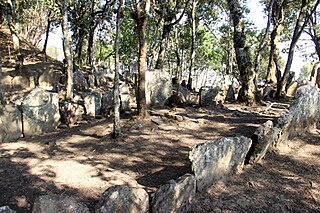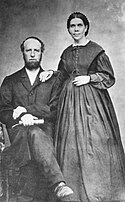
Mizoram is a state in northeastern India, with Aizawl as its capital city. The name is derived from "Mizo", the name of the native inhabitants, and "Ram", which means land, and thus Mizoram means "land of the Mizos". Within the northeast region, it is the southernmost landlocked state, sharing borders with three of the Seven Sister States, namely Tripura, Assam and Manipur. The state also shares a 722-kilometre border with the neighbouring countries of Bangladesh and Myanmar.

The Mizo people are an ethnic group native to north-eastern India, western Burma (Myanmar) and eastern Bangladesh; this term covers several ethnic peoples who speak various Kuki-Chin languages. The Mizos are a tribal hill peoples in the Indian state of Mizoram and its neighboring areas. All Mizo tribes and clans, in their folk legends, claim that Chhinlung/Sinlung/Khul, which means cave in the Mizo language was the cradle of the Mizos. Thus, it's sometimes concluded that the Mizo people lived as cave dwellers at some point.

The history of Mizoram basically encompasses the history of Mizoram which lies in the remotest part of northeast India. It is a conglomerate history of several ethnic groups of Chin people who migrated from Chin State of Burma. But information of their patterns of westward migration are based on oral history and archaeological inferences, hence nothing definite can be said. The recorded history started relatively recently around the mid-19th century when the adjoining regions were occupied by the British monarchy. The land is now inhabited by a mixture of people from Chin Hills and Bangladesh and its history is therefore largely reflected by those of Lusei, Hmar, Lai, Mara and Chakmas tribes. Following religious, political and cultural revolutions in the mid-20th century majority of the people agglomerated into a super tribe, Mizo. Hence the officially recognised settlement of the Mizos became Mizoram.
Mizoram Presbyterian ChurchSynod is the largest Christian denomination in Mizoram, northeast India. It was a direct progeny of the Calvinistic Methodist Church in Wales. It was the first church in Mizoram and is now one of the constituent bodies of a larger denomination Presbyterian Church of India (PCI), which has its headquarters in Shillong, Meghalaya. The administrative body called the Mizoram Synod has its headquarters at Mission Veng, Aizawl. As the first church, it remains the largest denomination in Mizoram.

Lal Thanhawla is an Indian politician and former Chief Minister of Mizoram from 11 December 2008 to 11 December 2018. Previously he was Chief Minister from 1984 to 1986 and from 1989 to 1998. He was elected to another term in the 2013 Mizoram Legislative Assembly election. This was the fifth time he was elected to the office of Chief Minister, which is a record in Mizoram. He belongs to the Indian National Congress. His electoral constituencies are Serchhip and Hrangturzo. He successfully contested the general elections nine times, in 1978, 1979, 1984, 1987, 1993, 2003, 2008, and 2013.

The Seventh-day Adventist Church is a major Christian denomination with a significant presence in India with over 1,607,719 members as of June 30, 2018. The Seventh-day Adventist Church splits India into seven Unions.

Ngopa is a town in the Champhai district of Mizoram, India. It is located in the Ngopa R.D. Block, and it serves as headquarters for that block. It is also an important administrative centre containing important government offices. Ngopa is 125 kilometres (78 mi) from the district's main city, Champhai, and 180 kilometres (112 mi) from the state's capital city, Aizawl.
Synod Hospital, Durtlang is a general hospital and nursing school in Aizawl, Mizoram. The hospital is widely known among Mizo people as "Durtlang Hospital". It is managed and governed by the Mizoram Presbyterian Church Synod. The hospital was established in 1928 by the Calvinistic Methodist Church as a nursing institute. It is the second hospital established, and the largest non-governmental hospital in Mizoram. It has a registered capacity of 355 beds.

Helen Lowry College of Arts & Commerce, Aizawl, is a College run by the Seventh-day Adventist Church at Aizawl in the Mizoram State of India. It is a part of the Seventh-day Adventist education system, the world's second largest Christian school and College system. It was inaugurated as college on 23 August 2017 by the Chief Minister of Mizoram Lalthanhawla.
Mizoram is a land of rolling hills, valleys, rivers and lakes in Northeast India. As many as 21 major hills ranges or peaks of different heights run through the length and breadth of the state, with plains scattered here and there. The average height of the hills to the west of the state are about 1,000 metres. These gradually rise up to 1,300 metres to the east. Some areas, however, have higher ranges which go up to a height of over 2,000 metres.
C. Silvera was a retired medical doctor and a Congress politician in Mizoram, India. He was the longest serving member of Parliament of India from the Mizoram.

Christianity is the largest religion in Mizoram. The majority (87%) of Mizos are Christian in various denominations, predominantly Presbyterian. The government of Mizoram declared that Christianity plays a very important role among the daily life of Mizo community. The culture of Mizoram mainly influence by Christianity. Hence, Christianity was given a special status on the state by the government while maintaining secular environment. Hindus form a small minority (3.55%) mainly of Manipuris and there are also around (7.93%) Buddhists according to the 2001 census, mostly made up from Chakma settlers of Arakan origin. There are about 8,000 mostly ethnic Mizo followers of a Judaic group Bnei Menashe, who claim descent from the biblical Menasseh. Muslims make up about 1.1% of the state population.
Frederick William Savidge was a pioneer English Christian missionary in northeast India. He and James Herbert Lorrain brought Protestantism to Mizoram, and some parts of Assam and Arunachal Pradesh. Together they were entirely responsible for the creation of written language in Mizo, beginning of literacy, origin of formal education and establishment of churches in Mizoram. They devised the original Mizo alphabets based on Roman script, prepared the first book and dictionary in Mizo, started the first school among the Mizos. Mizoram has become the most Christian populated state in India. As a professional educator Savidge was single-handedly responsible for introducing quality education in Mizoram. He is deservedly known as the Father of Mizo Education.
The history of Christianity in Mizoram covers the origin and development of all forms of Christianity in Mizoram since the British occupation at the end of the 19th century. Christianity arrived as a consequence of tribal warfare, raids of British plantations, and the ensuing punitive British military expedition called the Lushai Expedition of 1871. The subsequent annexation of the erstwhile Lushai Hills to the British Empire opened the gateway for British Christian missions to evangelise the Mizo people.

Mizoram is a state in the northeast of India. Mizoram is considered by many as a beautiful place due to its dramatic landscape and pleasant climate. There have been many attempts to increase revenue through tourism but many potential tourists find the lack of amenities to be a hurdle. However, the State continues to promote itself and many projects have been initiated. The tourism ministry continues to maintain or upgrade its tourist lodges throughout the state. Foreign tourists are required to obtain an 'inner line permit' under the special permit before visiting. The permit can be obtained from Indian missions abroad for a limited number of days or direct from Mizoram Government authorities within India. The state is rich in bird diversity, which has the potentiality to make it a major birding destination. For Mrs Hume's pheasant, Mizoram is a stronghold. There is also a rare record of the wild water buffalo from the state. There are several past records of the Sumatran rhinoceros from Mizoram, then Lushai Hills. The small population of wild elephants can be seen in Ngengpui and Dampa Sanctuaries. Some of the interesting sites are Mizo Poets' Square also known as Mizo Hlakungpui Mual in Mizo, the Great Megaliths locally known as 'Kawtchhuah Ropui'.

Laltluangliana Khiangte is an Indian scholar, playwright and poet of Mizo literature. He was the principal of the Serampore College and a former professor of the North Eastern Hill University. He is presently a professor in the Department of Mizo at Mizoram University. He is a recipient of the Pu Buanga Award, the highest literary award of the Mizo Academy of Letters. The Government of India awarded him the fourth highest civilian honour of the Padma Shri, in 2006, for his contributions to Indian literature.

Phullen is a sub Town in Aizawl district, in the Indian state of Mizoram.

Aizawl is the capital of the state of Mizoram in India. Aizawl was officially established on 25 February 1890. With a population of 293,416, it is the largest city in the state. It is also the centre of administration containing all the important government offices, state assembly house and civil secretariat. The population of Aizawl strongly reflects the different communities of the ethnic Mizo people.

The Seventh-day Adventist Church in Mizoram is formally organised as the Mizo Conference of Seventh day Adventist. It is one of the conferences of the Northeast India Union of Seventh-day Adventists under the Southern Asia Division of Seventh-day Adventists. It currently has 81 Churches and 22,446 members.












